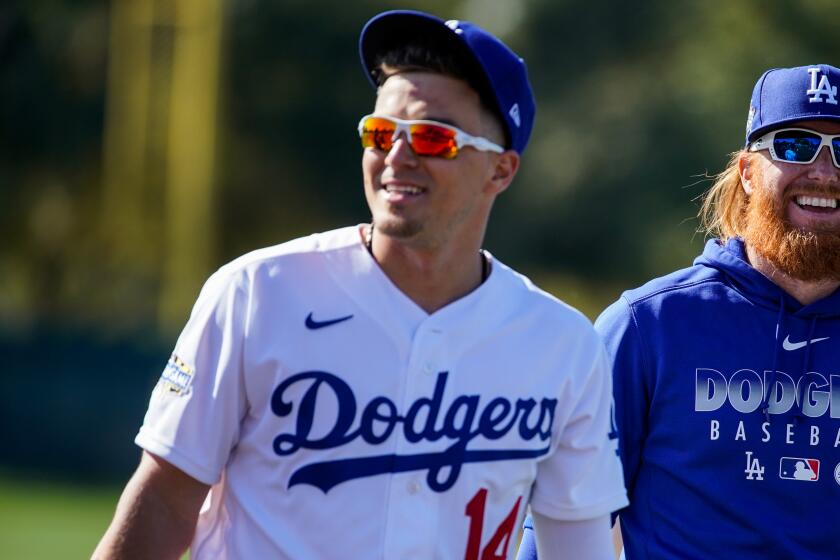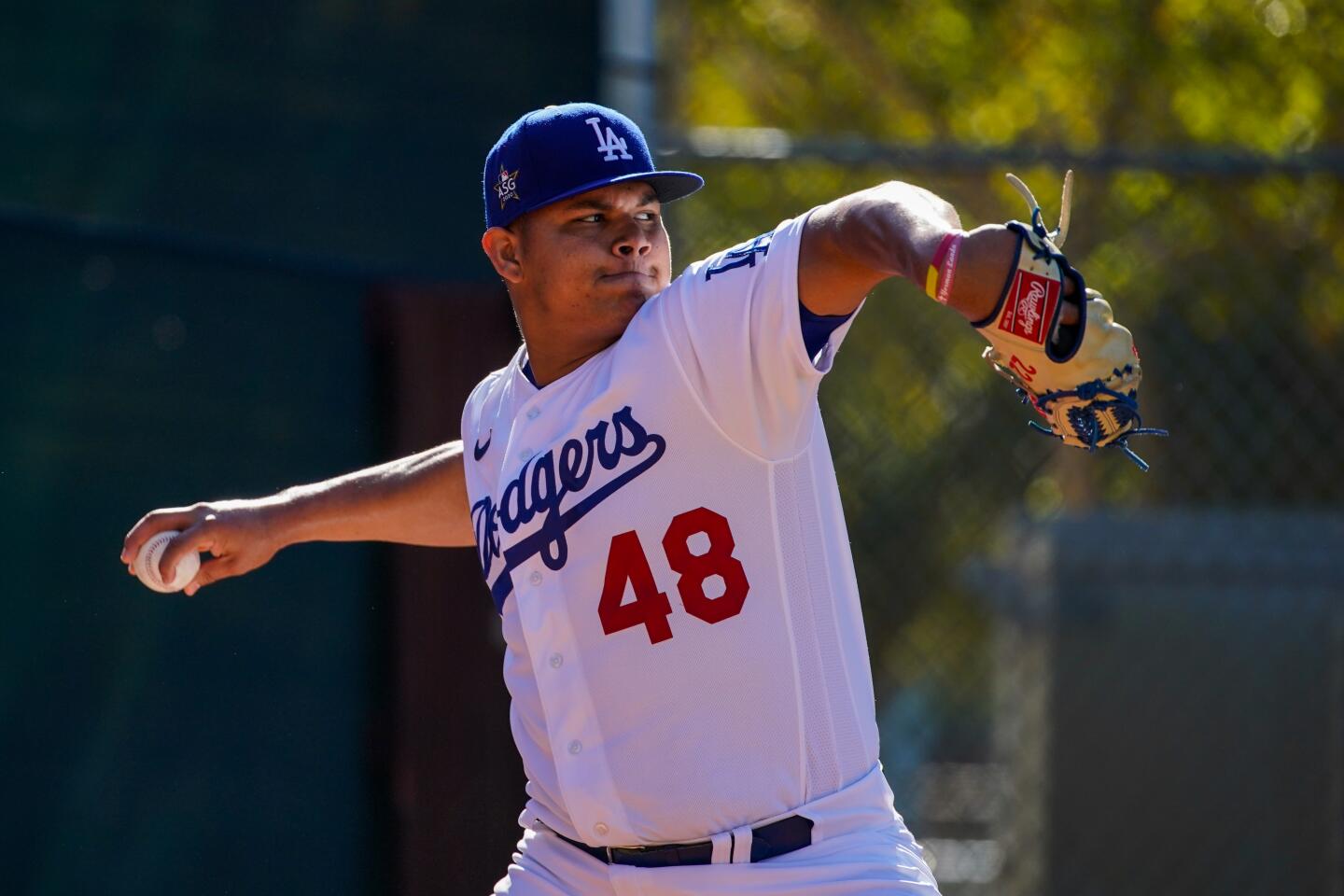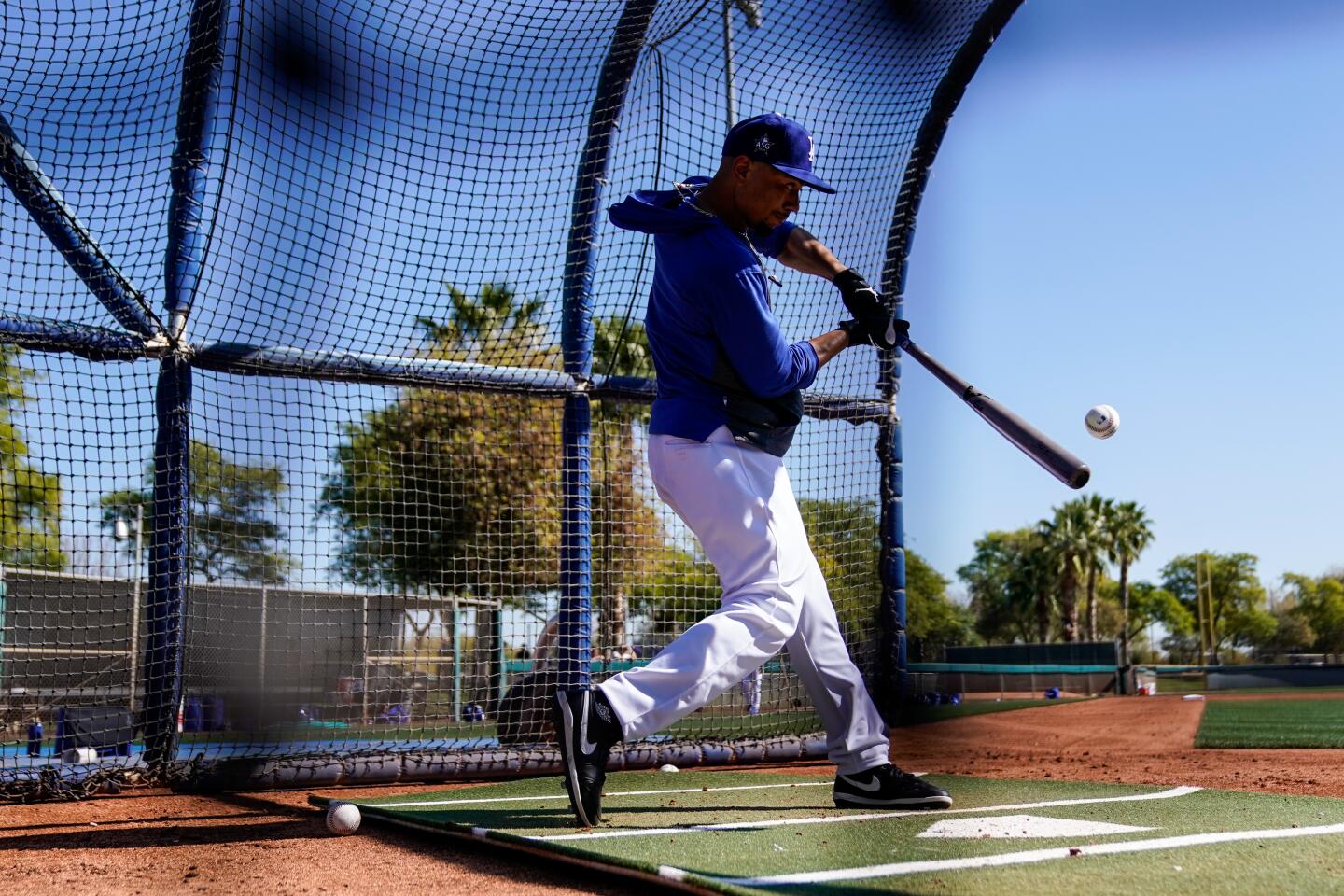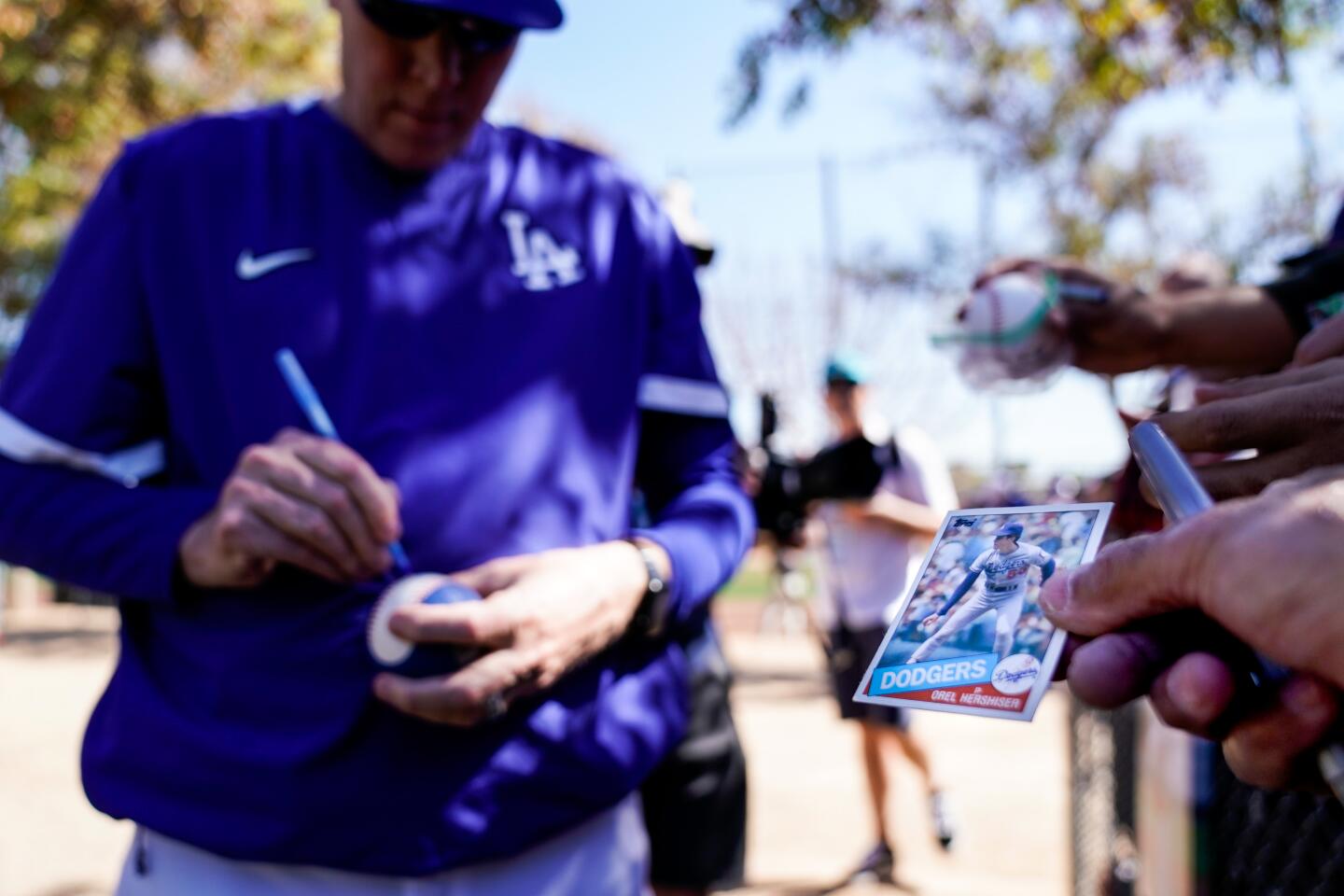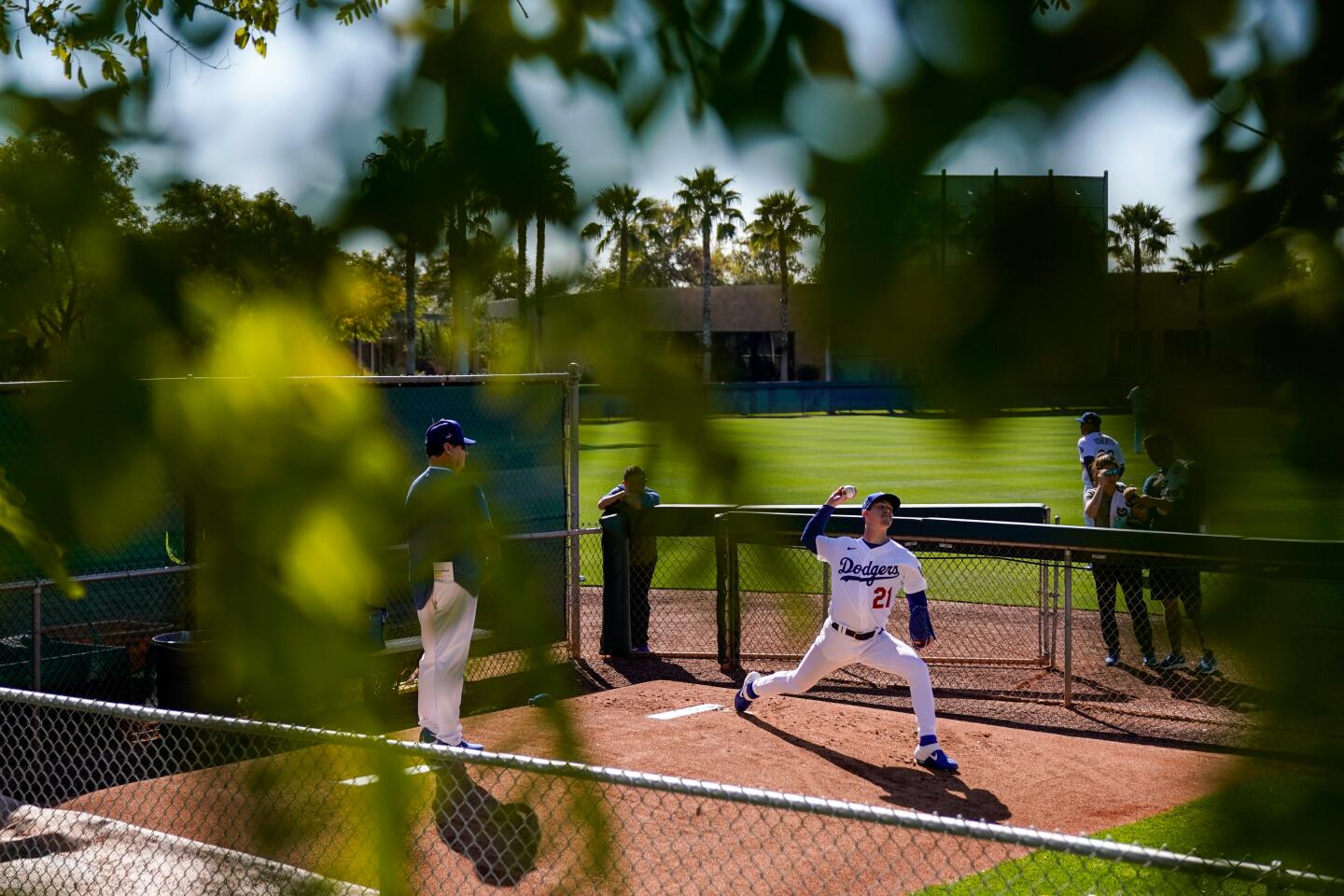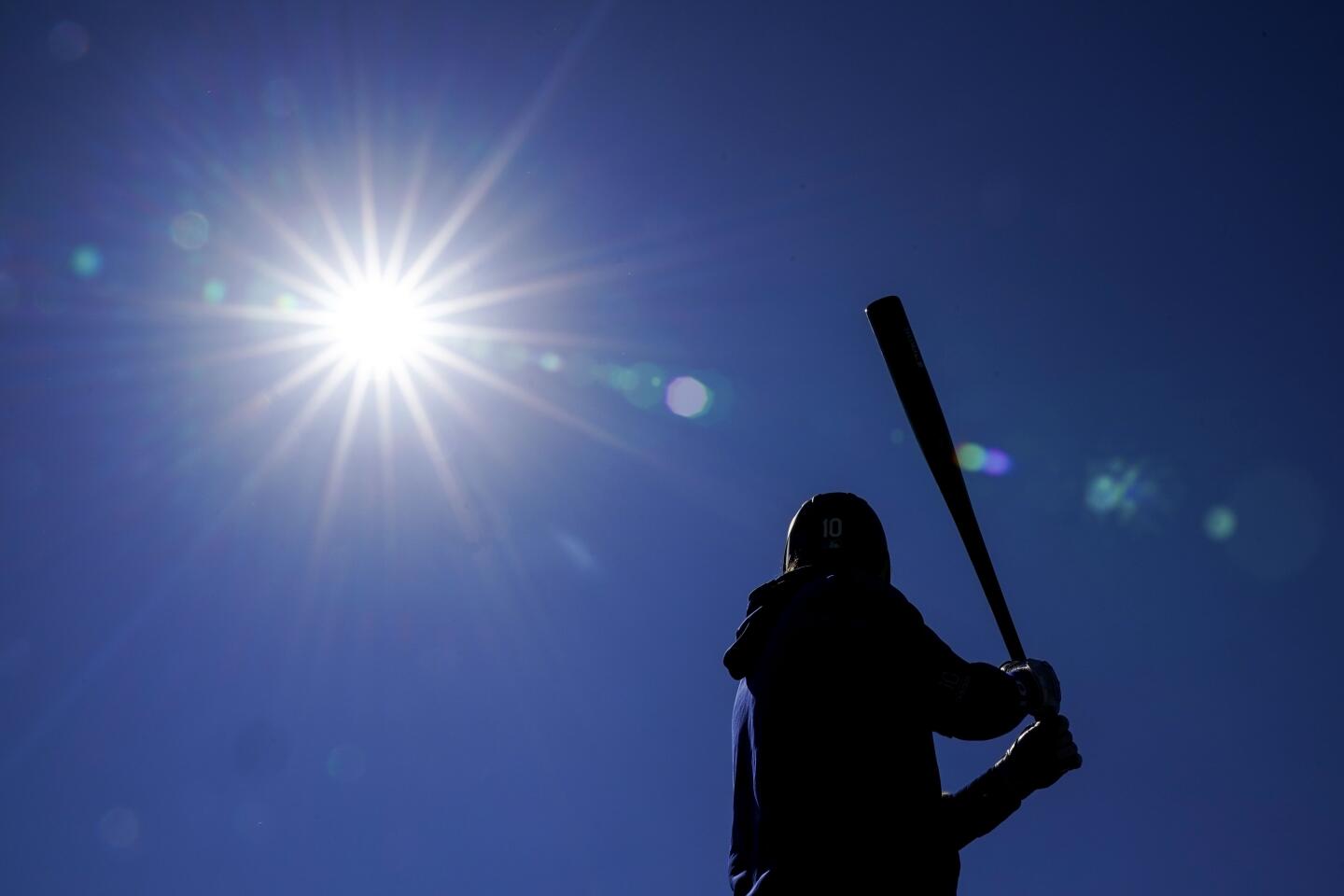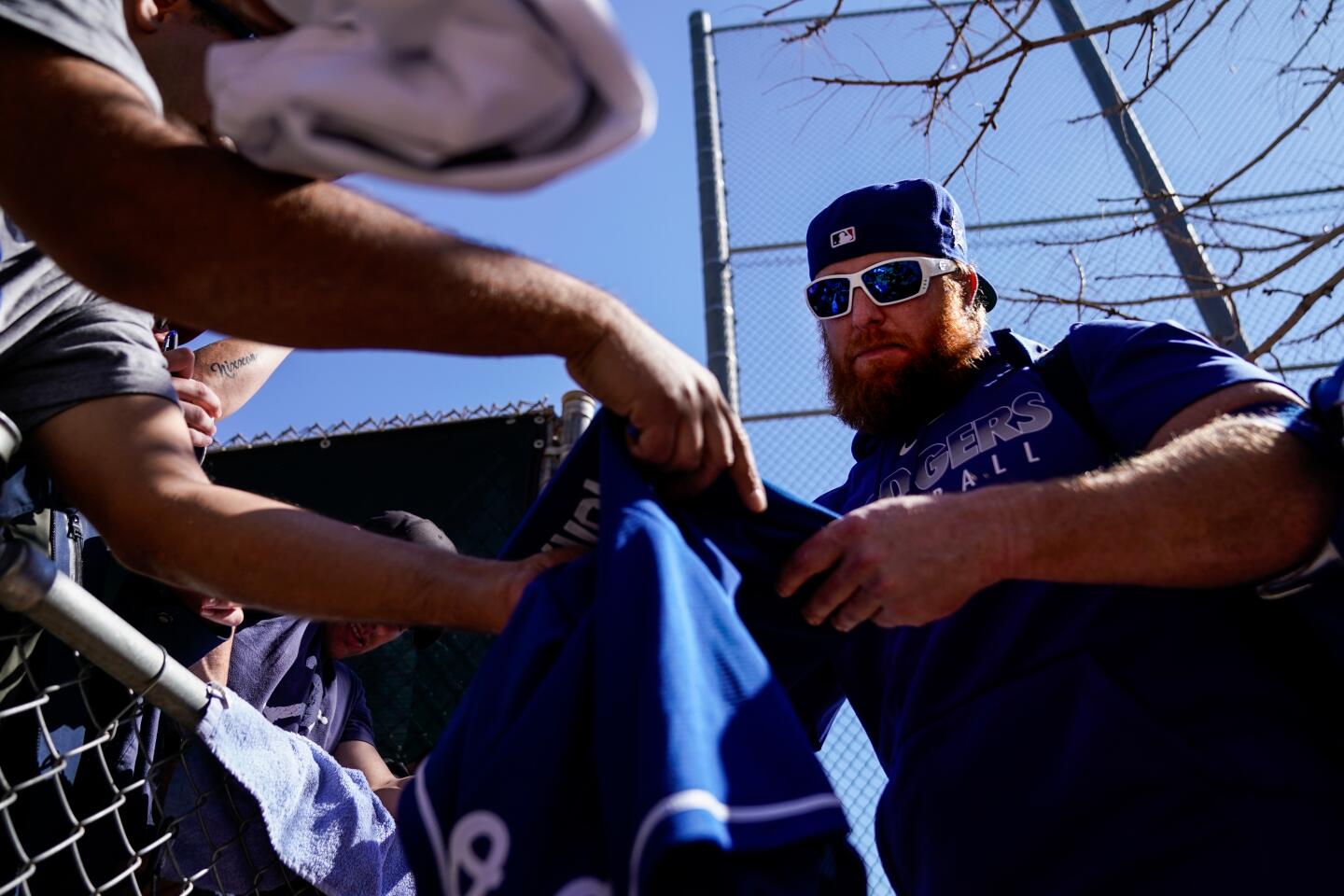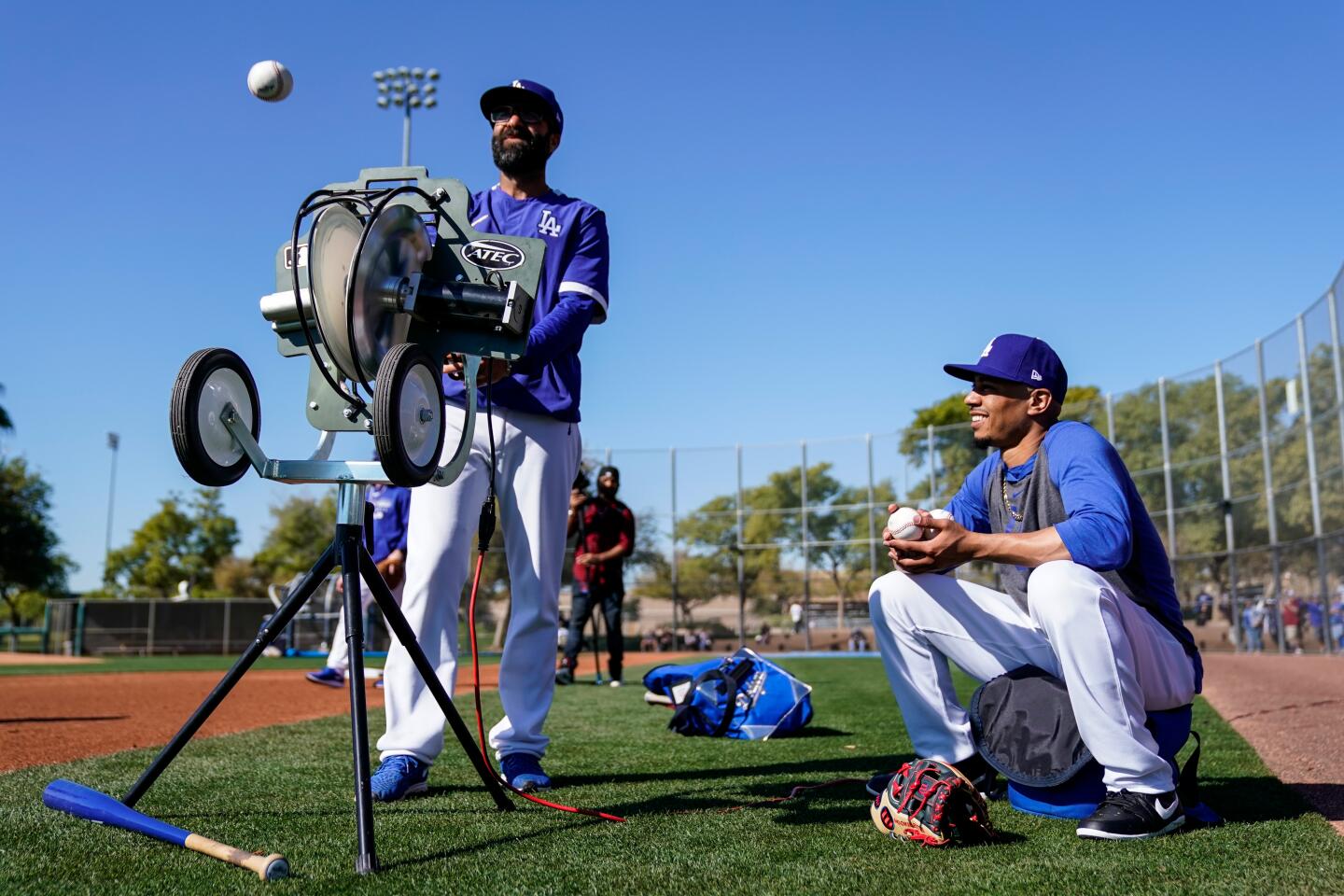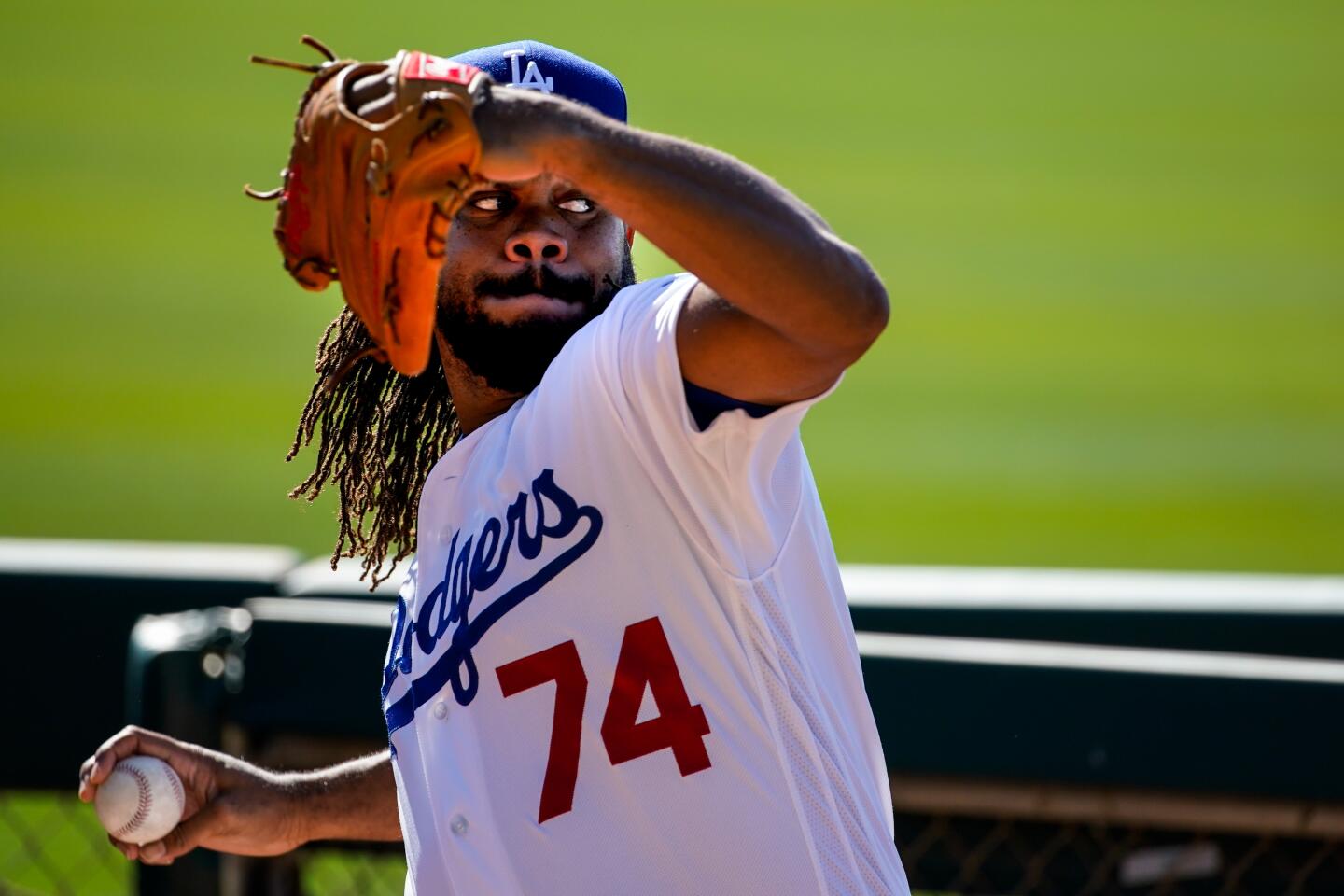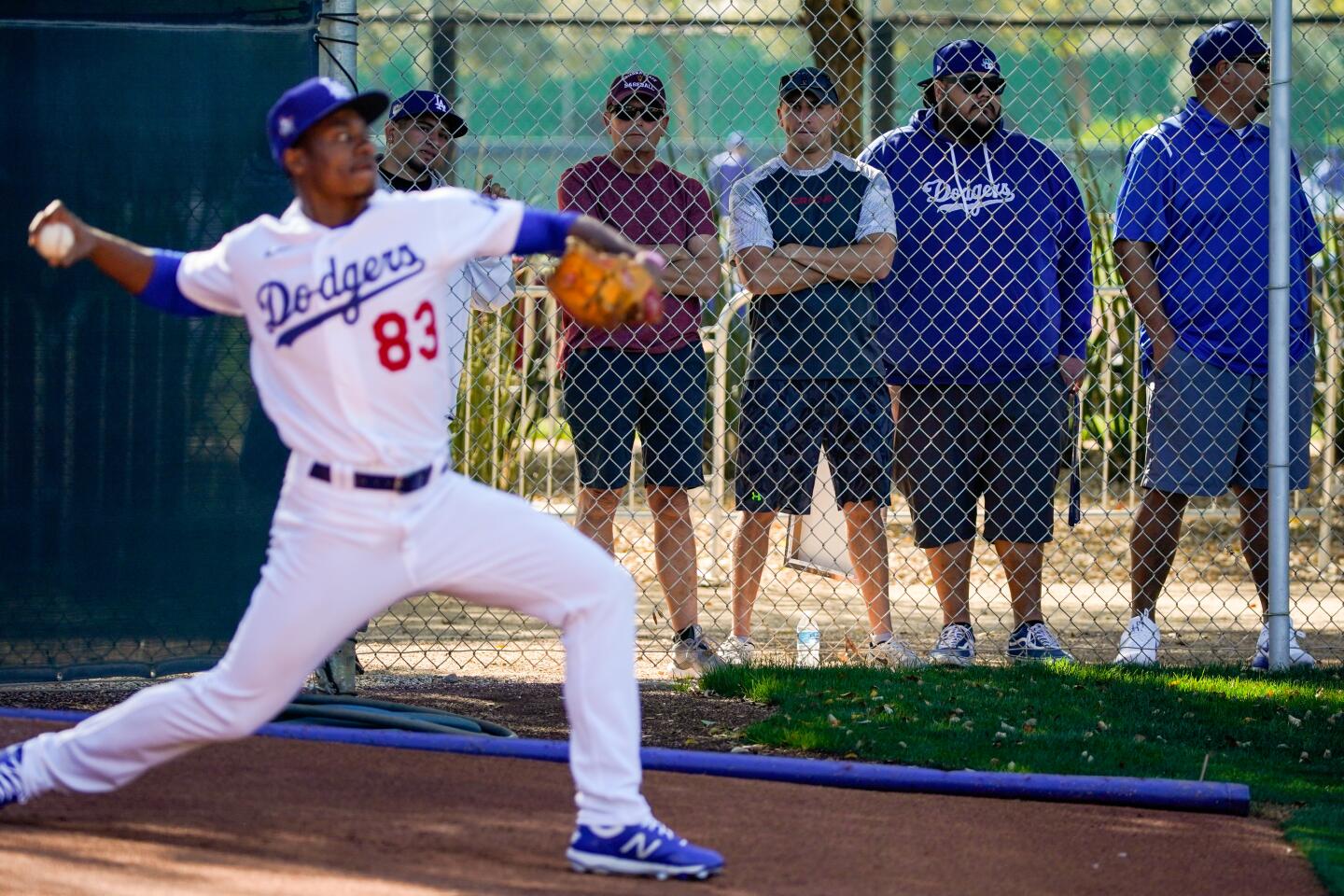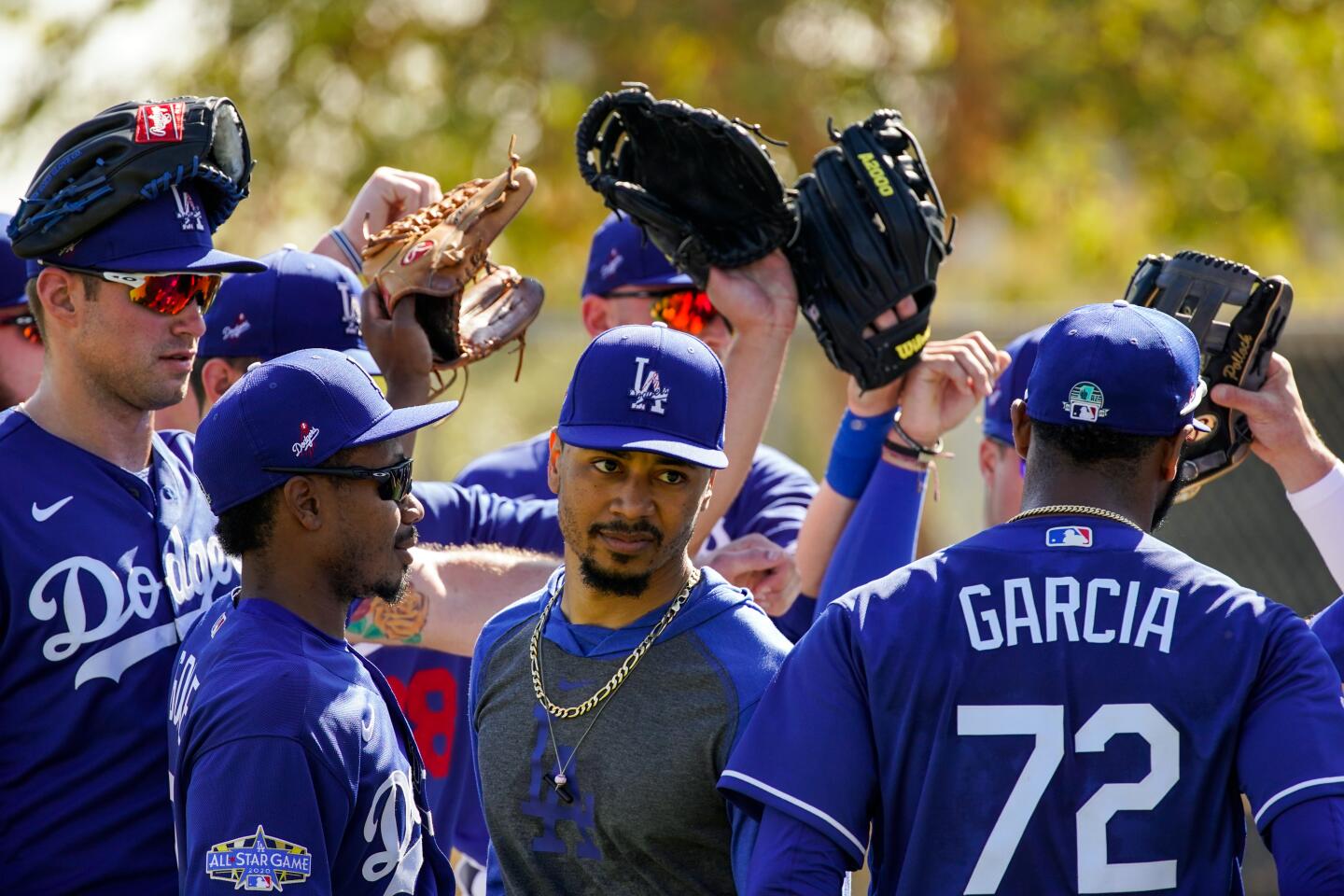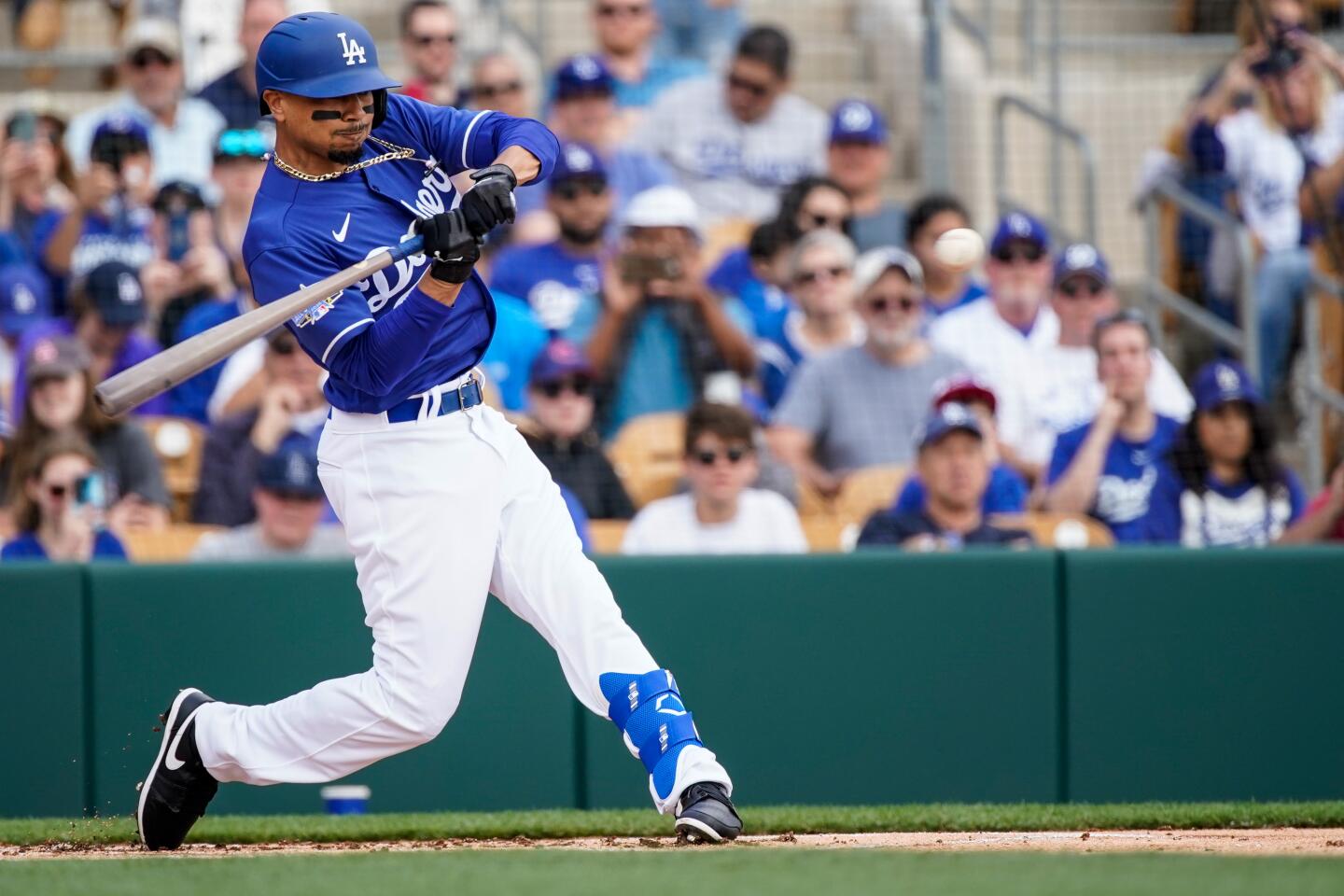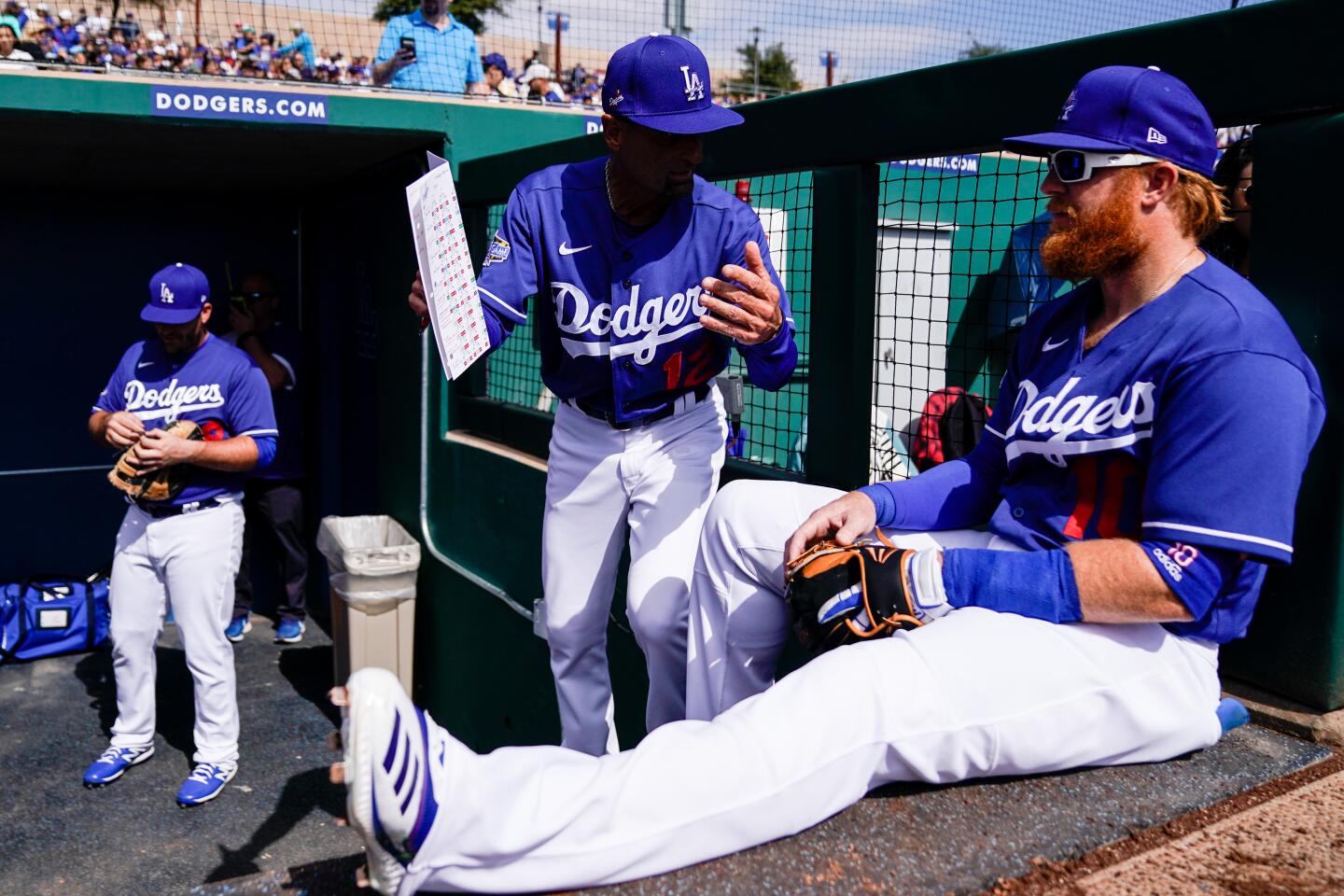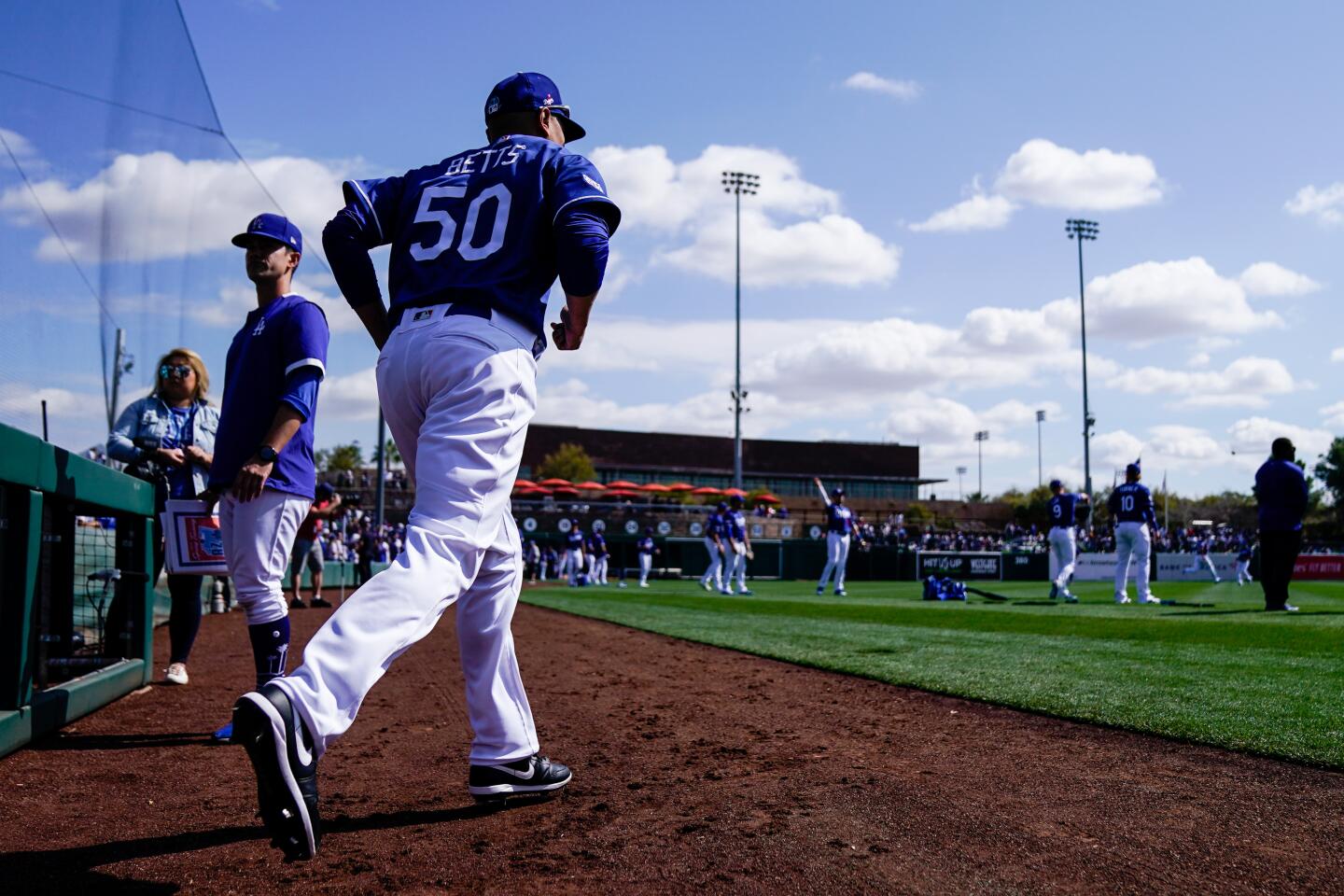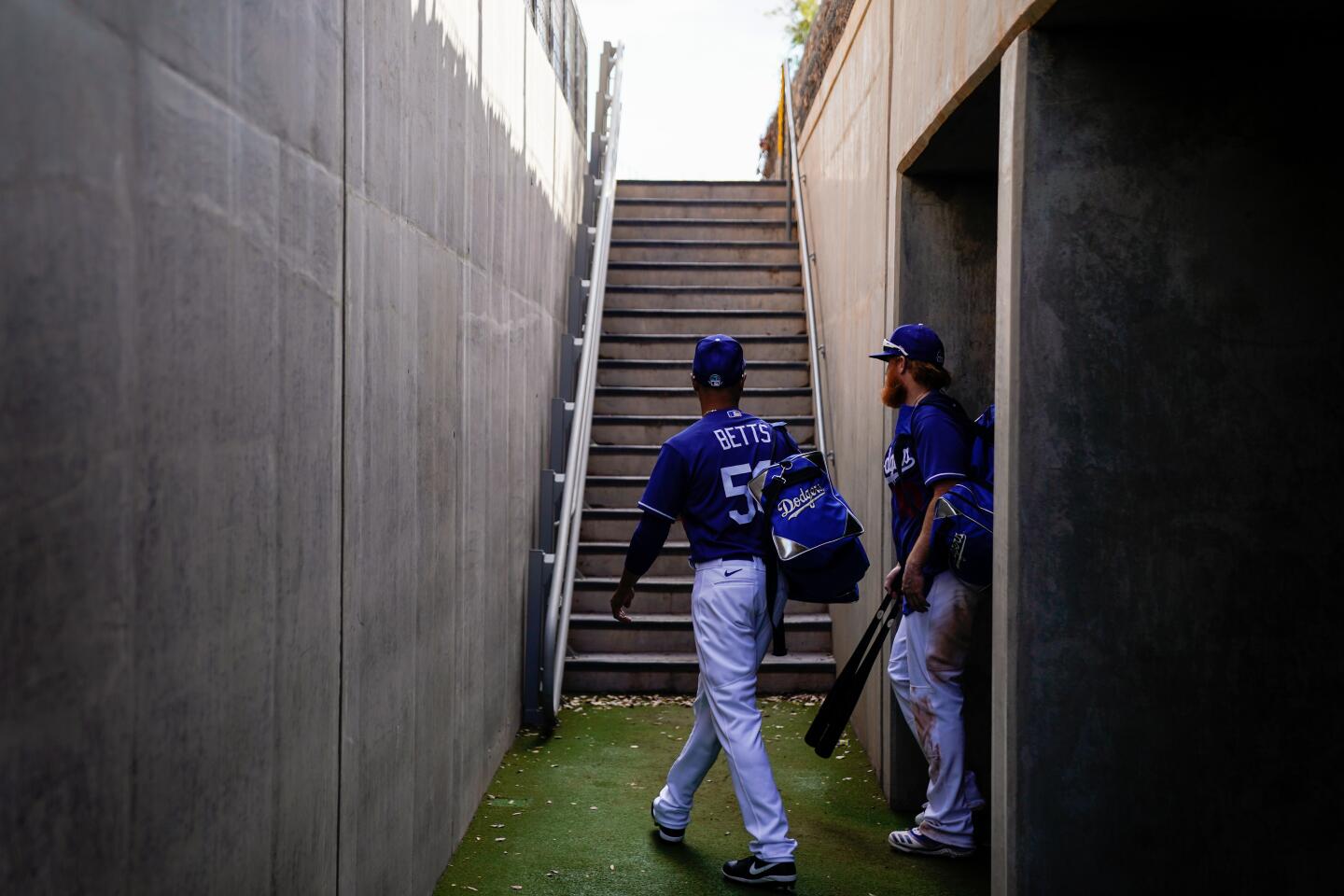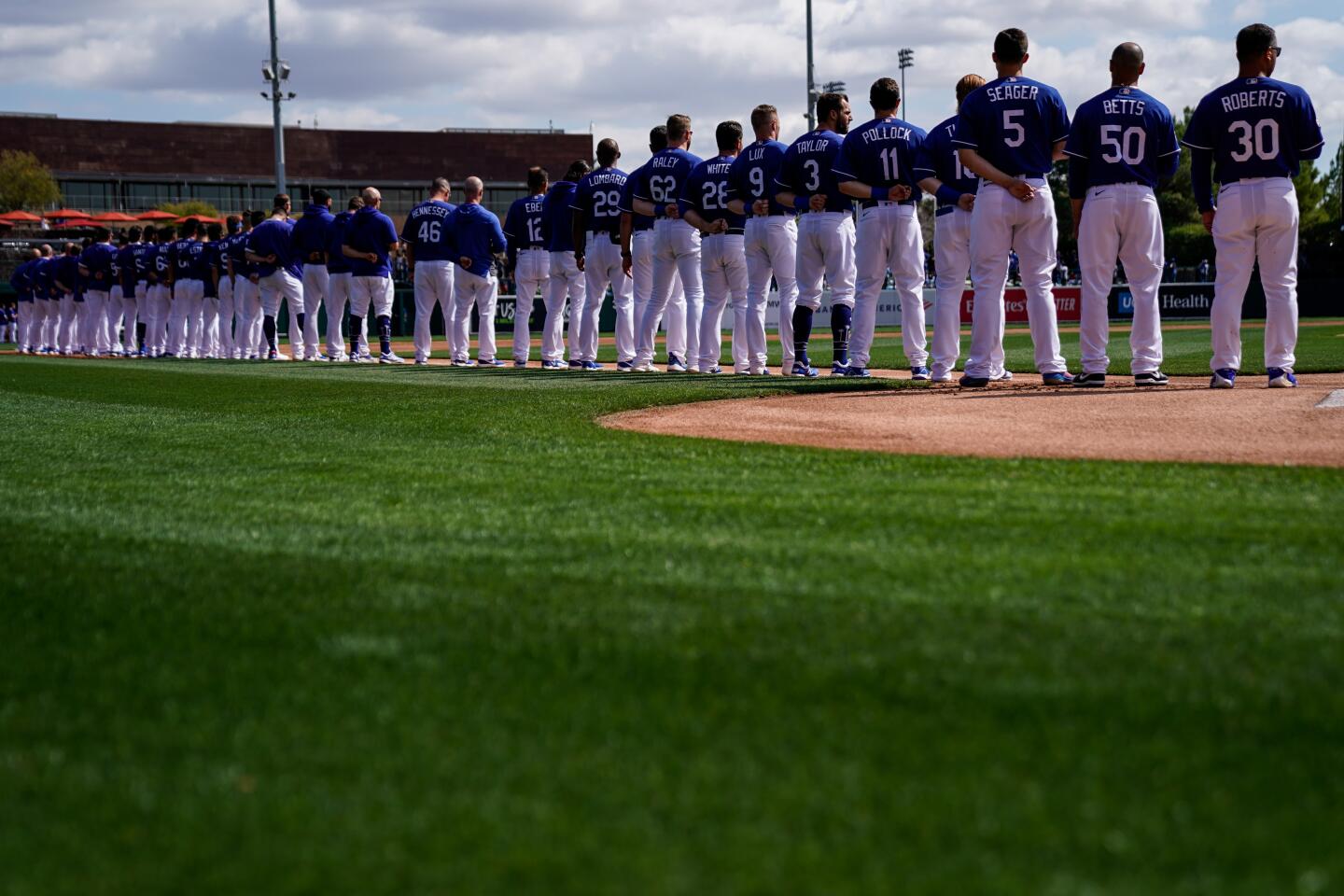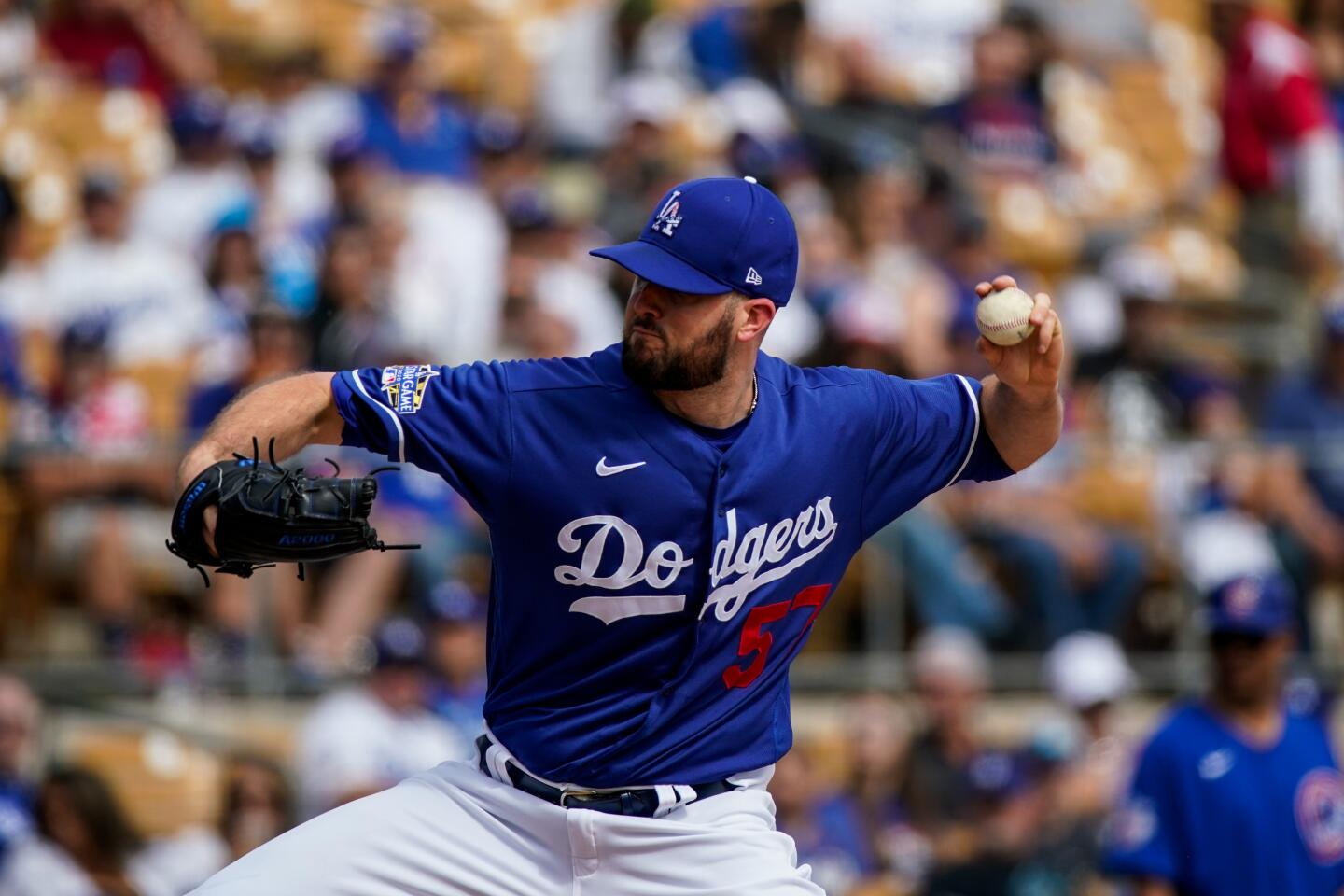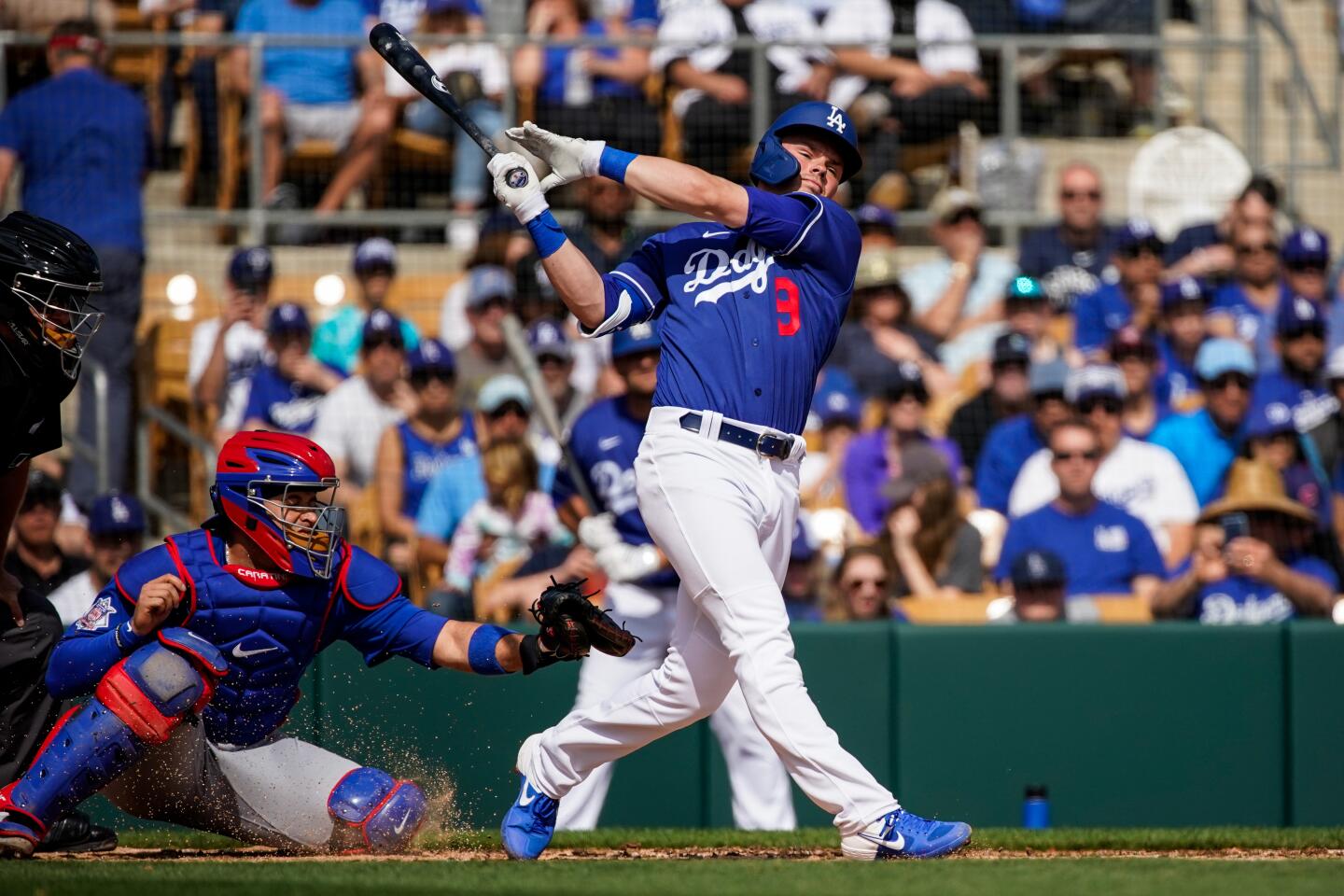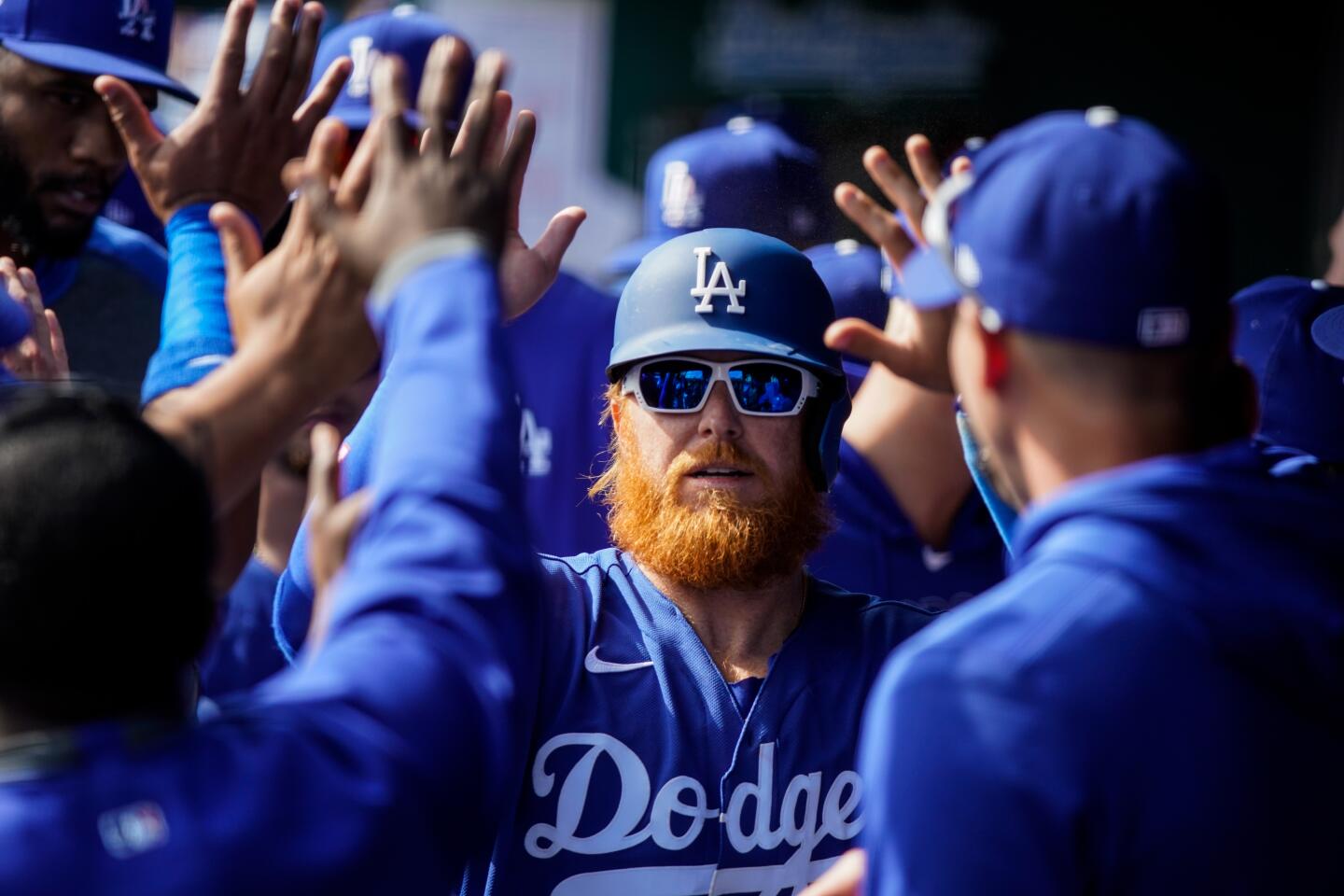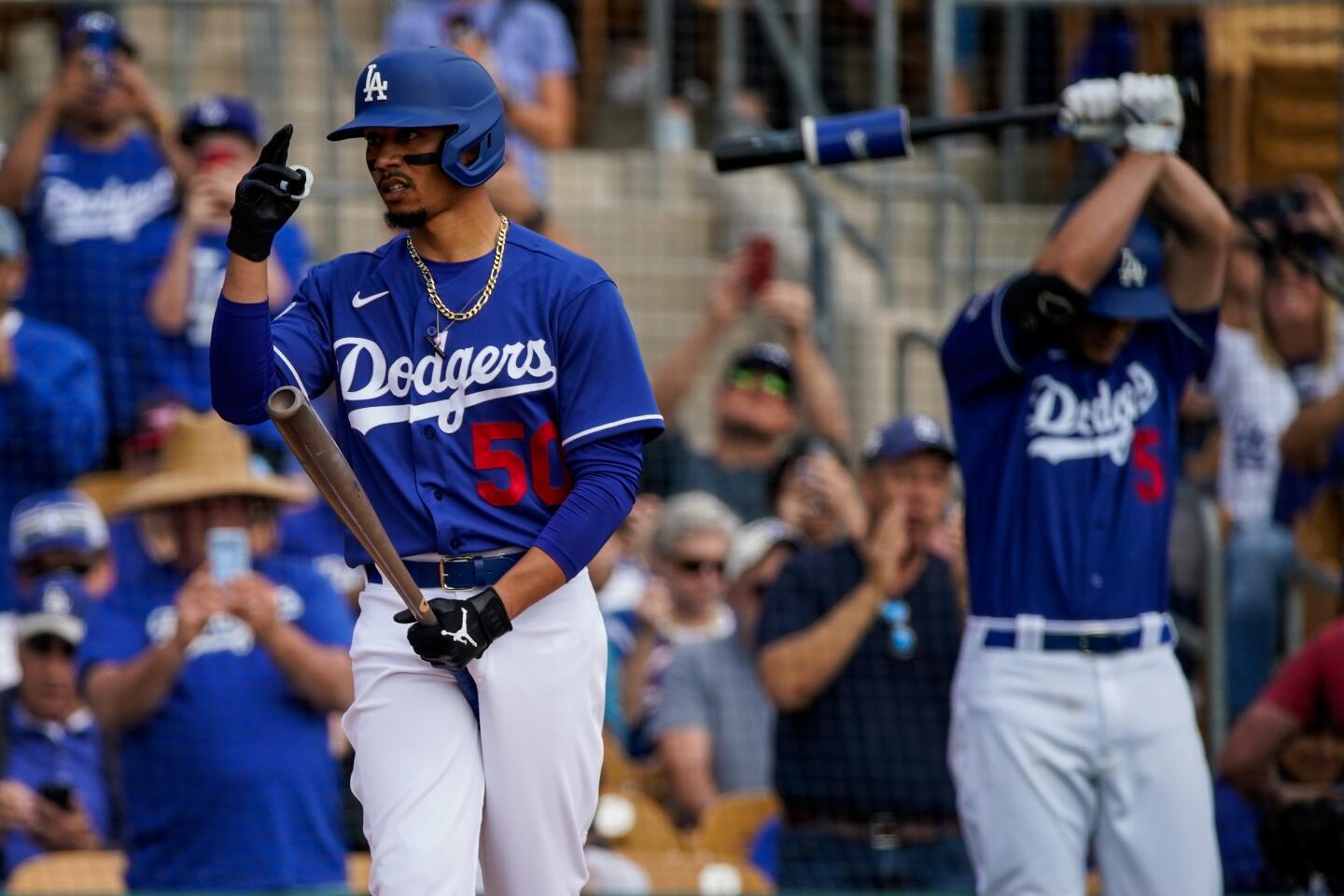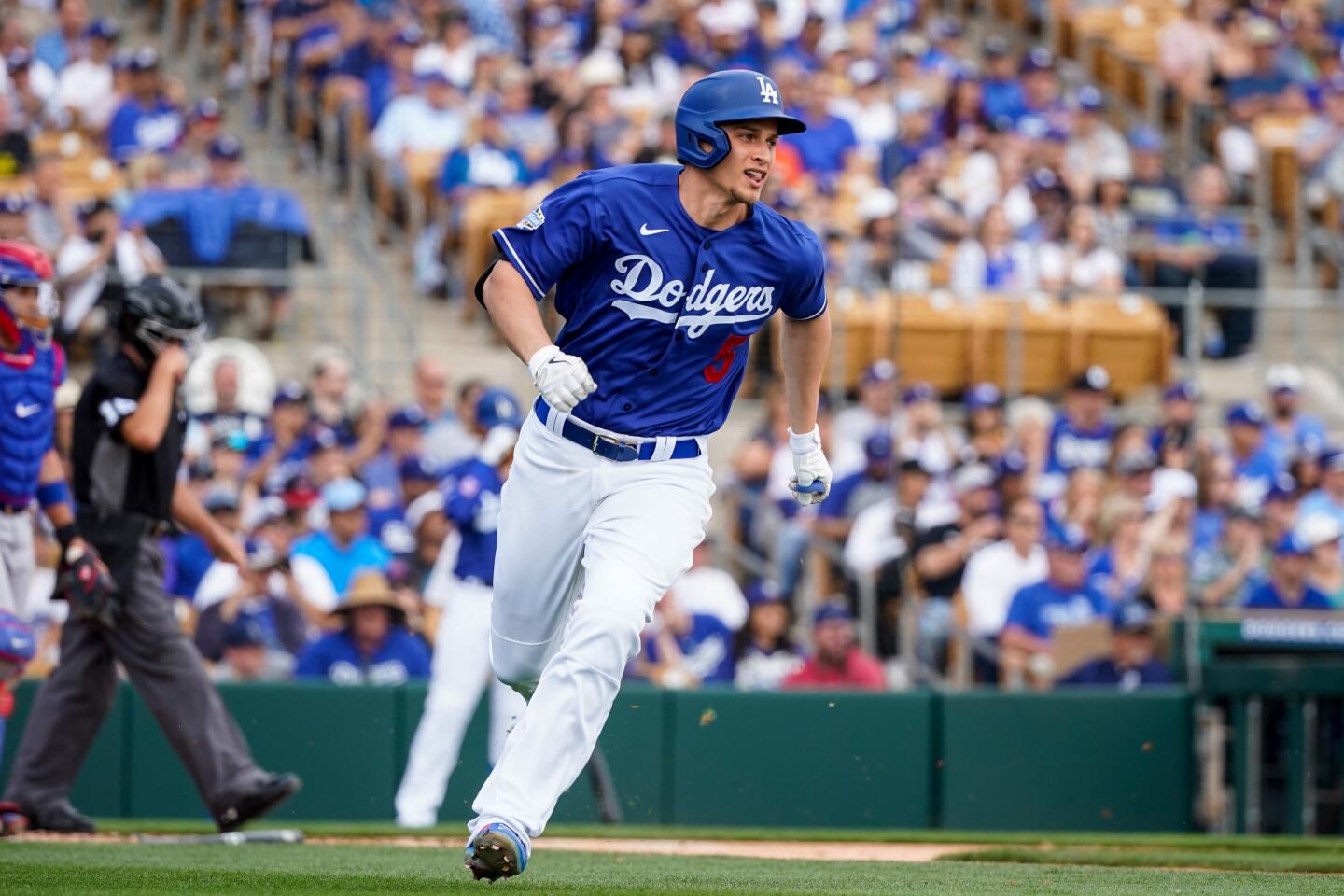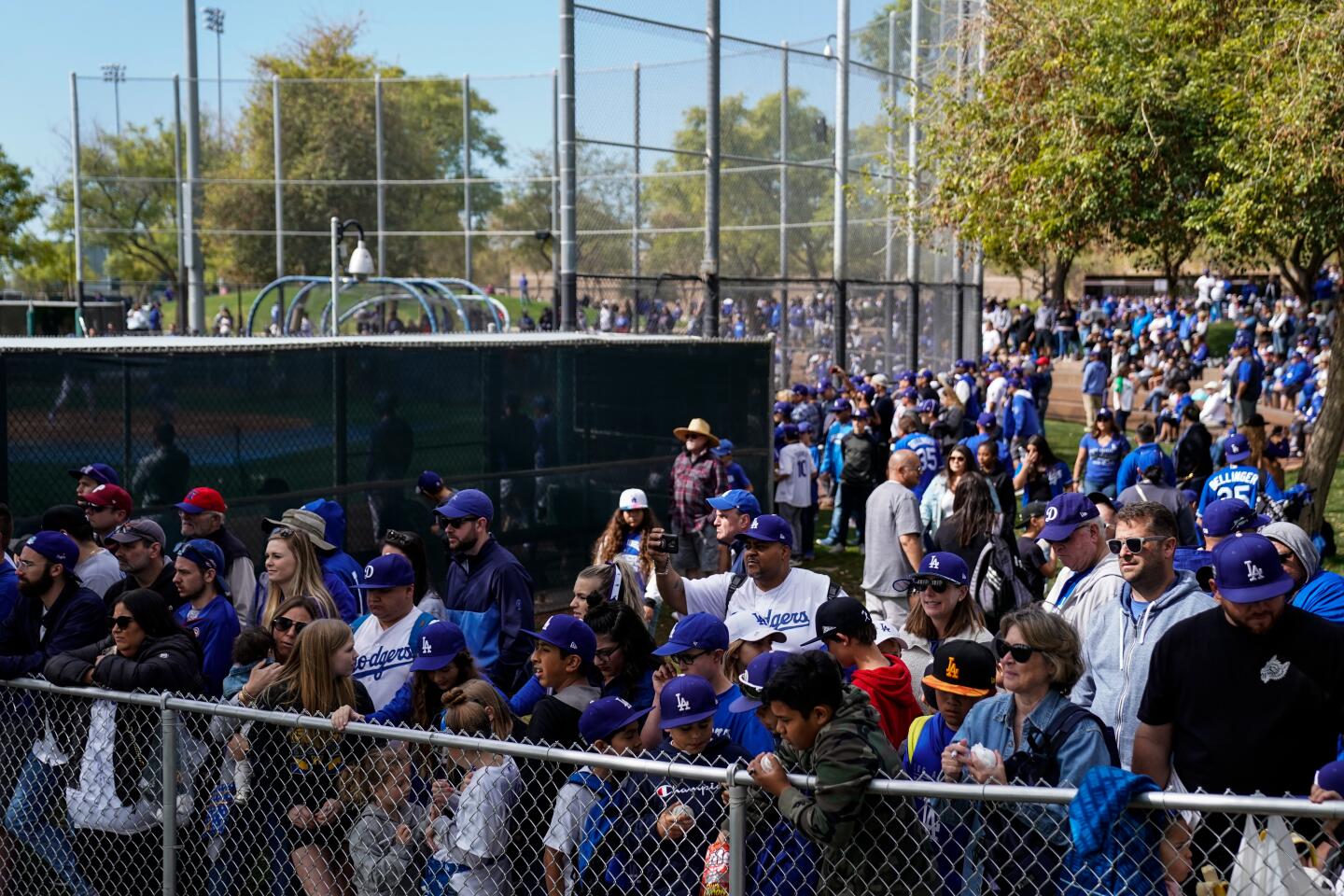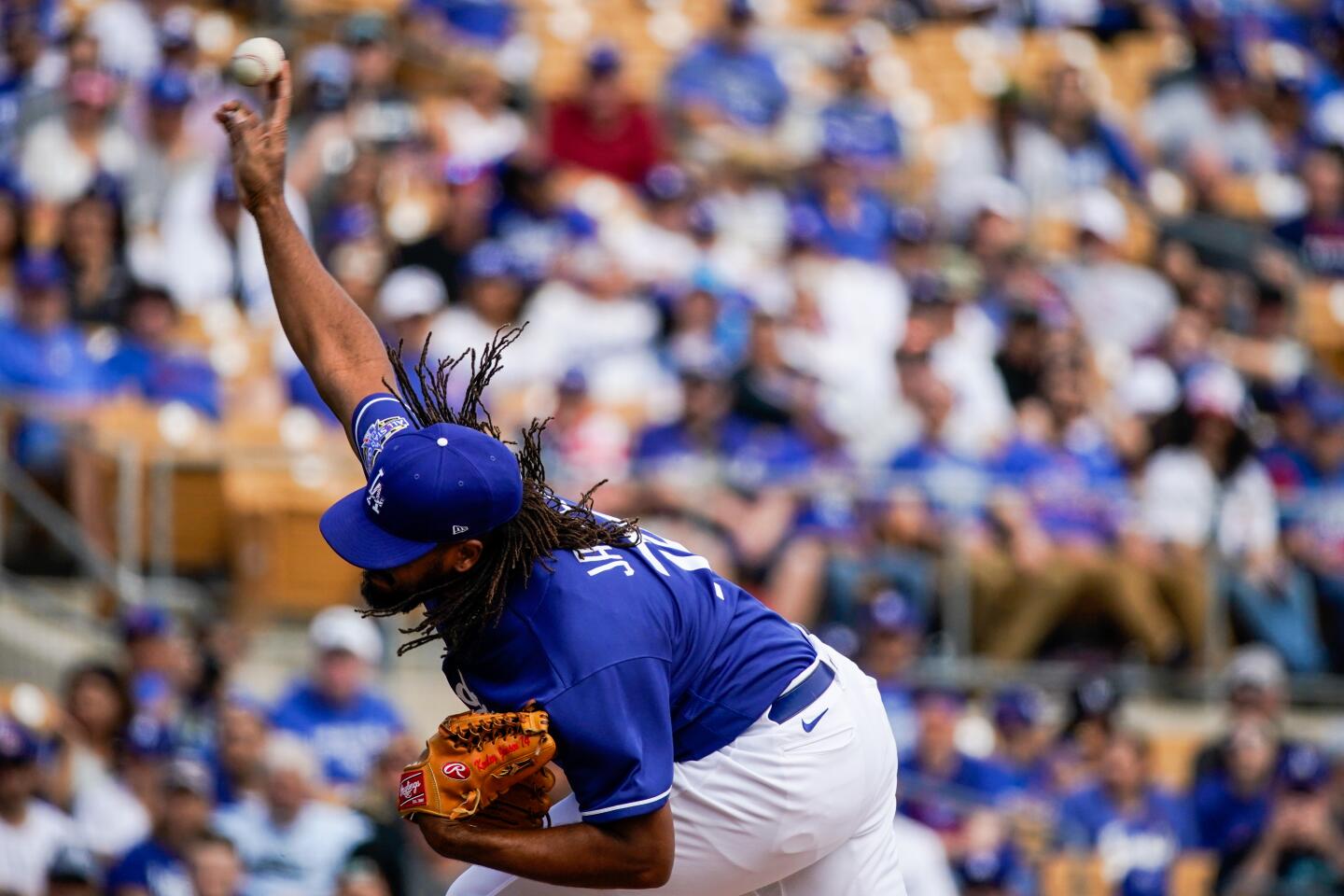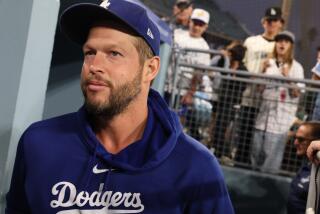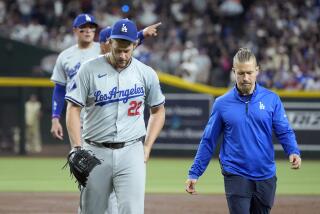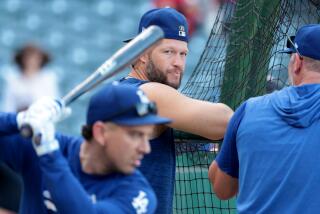Clayton Kershaw shows off some encouraging velocity in start for Dodgers
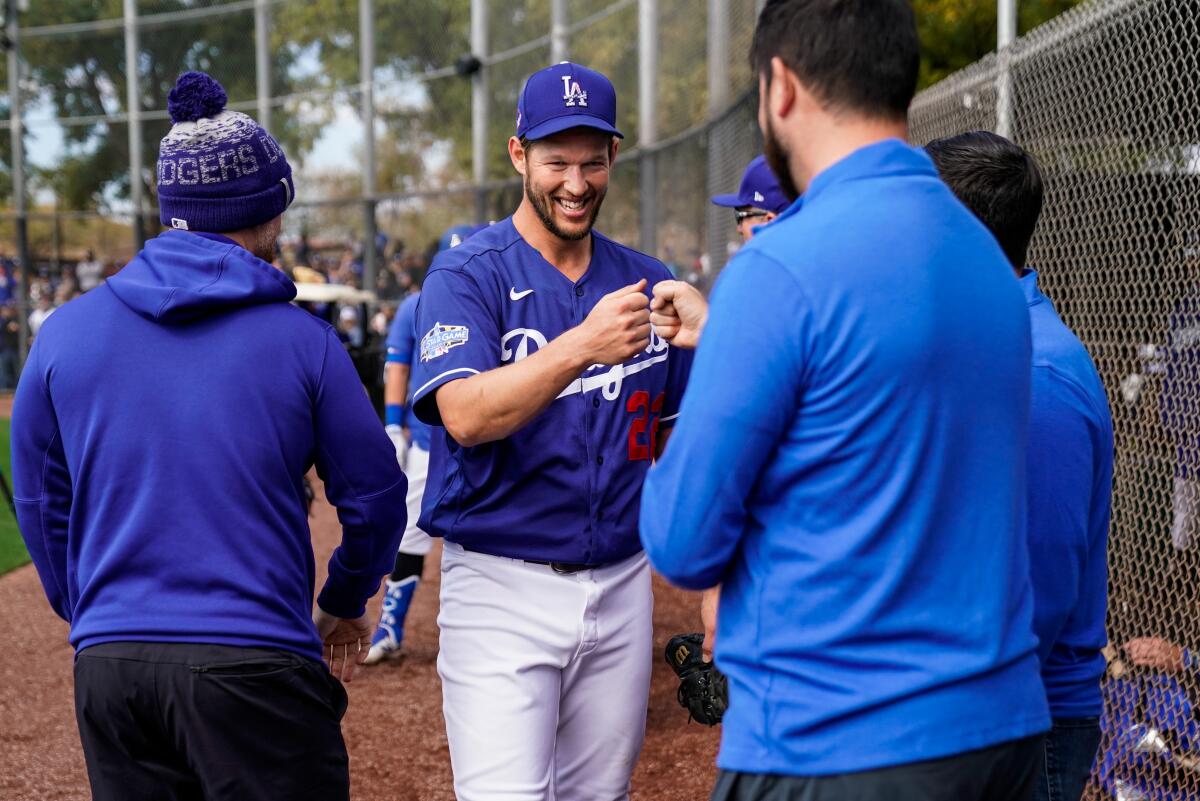
- Share via
PHOENIX — It was one number on the scoreboard of a spring-training stadium in a February game that doesn’t count, but it seemed significant considering the Dodgers pitcher responsible for it.
Clayton Kershaw’s first-pitch fastball to Ryon Healy in the second inning of Friday’s 6-5 exhibition loss to the Milwaukee Brewers was clocked at 93 mph, an encouraging sign for a left-hander who has struggled to regain his velocity while dealing with lower-back and shoulder injuries in recent years.
Kershaw threw 1 2/3 scoreless innings in his first spring start, giving up no hits, striking out four and walking two. He threw 37 pitches, 20 for strikes. He breezed through a one-two-three first before laboring a bit in a 26-pitch second.
A shoulder injury prevented Kershaw from pitching in an exhibition game last spring. Though he recovered to go 16-5 with a 3.03 ERA in 28 starts and one relief appearance, Kershaw’s average fastball velocity dipped to 90.4 mph according to Fangraphs, a drop from his 93.6-mph average in 2016 and 92.7-mph average in 2017. Most of his fastballs Friday were clocked at 91 or 92 mph.
“It felt great. It was awesome,” Kershaw said. “I might not have hit one spot today, but physically, I felt like the ball was coming out well, it was breaking the right way, and now it’s just figure out how to throw strikes. Throwing four-seamers, you want the ball to have life up in the zone, and I feel like maybe even compared to last year, it’s a little better.”
Asked how different he feels physically this spring, Kershaw said, “It’s like night and day.”
Kershaw, who turns 32 next month, adjusted his off-season program to begin throwing earlier and more aggressively. He spent two days at Driveline Baseball’s headquarters in Washington to work on his mechanics and develop some new training techniques.
Dodgers utilityman Kiké Hernández made adjustments to his swing during the offseason that he believes will produce more power.
“I feel good,” Kershaw said. “Sometimes good is different, unfortunately.”
Can he point to anything he changed this winter as the reason he feels so good?
“It’s probably a culmination of everything,” Kershaw said. “Having a healthy off-season, being able to make some gains strength-wise, doing some different things to help maintain or gain some arm action or arm speed … it’s probably a whole big bunch of everything.”
Manager Dave Roberts has noticed a change in Kershaw.
“I think with Clayton, we just can’t really appreciate what he was going through the last couple of years with the body,” Roberts said. “No one is going to make excuses, but his demeanor this spring is completely different from year’s past. Now, he can go out there and fine-tune things and still compete and not worry if his body is going to let him down.”
Hot corner
Matt Beaty started at third base Friday, a position the left-handed-hitting utility man has focused more on this spring in an effort to solidify a bench spot.
“When we give J.T. a day off, it makes sense to be able to play Beaty there,” Roberts said, referring to Justin Turner. “And if you look at our roster, [we’d like] to be able to keep Max [Muncy] on the right side of the diamond.”
Third base was Beaty’s primary position at Belmont University, but he has played first base and the corner outfield spots as a professional. Of his 54 starts for the Dodgers as a rookie last season, 26 were in the outfield, 21 were at first base and seven were at third.
“He looks really good over there,” Roberts said. “For me, the ball goes in the glove and it looks comfortable. For him, it’s like riding a bike. It just makes him more valuable and gives us more options.”
Beaty, 26, provided significant power in a reserve role last season, batting .265 with a .775 on-base-plus-slugging percentage, nine homers, 19 doubles and 46 RBIs in 99 games and .379 (25 for 66) with nine extra-base hits with runners in scoring position.
He hit .291 with an .834 OPS through August before tailing off in September, when he hit .160 with a .542 OPS.
“I think there was a point where he tried to elevate the ball a little bit more and his swing got a little longer,” Roberts said. “We’re encouraging him to be himself … to take good at-bats and hit line drives. As long as he does that, he’ll be fine.”
More to Read
Are you a true-blue fan?
Get our Dodgers Dugout newsletter for insights, news and much more.
You may occasionally receive promotional content from the Los Angeles Times.

